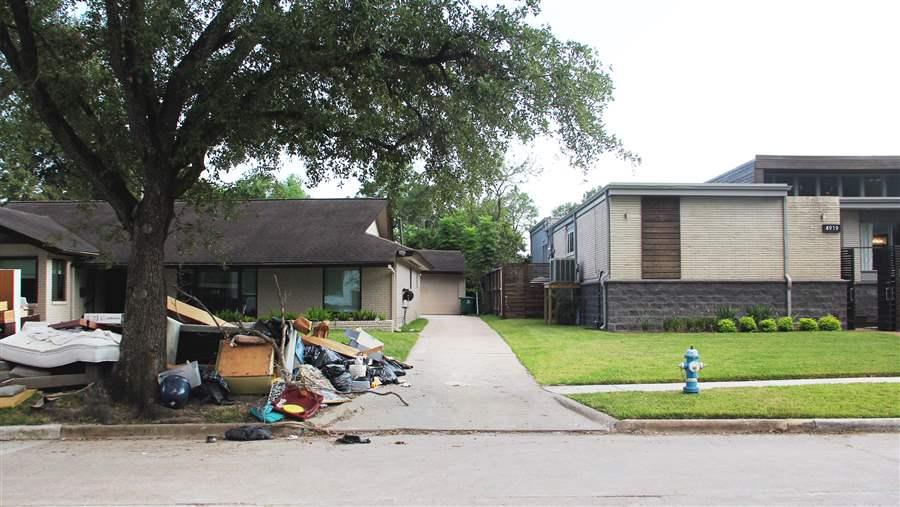Every $1 Invested in Disaster Mitigation Saves $6
Spending to reduce risk saves lives and creates jobs, key study finds

The house on the right in Meyerland, Texas, was elevated above the 100-year floodplain and largely spared damage from Hurricane Harvey while the non-elevated one on the left sustained flood damage. A new study by the National Institute of Building Sciences finds $6 saved for every dollar invested in mitigation activities to reduce risk and disaster losses.
© Raj Mankad/Rice Design AllianceWith the damage from Hurricanes Harvey and Irma estimated at $290 billion, it is clear that the nation must do more to better protect our communities from natural disasters. One way to do that is by anticipating the threats and acting in advance to reduce risk and limit losses. These are investments with proven returns.
Today, the National Institute of Building Sciences (NIBS) released a finding that every $1 invested in disaster mitigation by three federal agencies saves society $6. The Natural Hazard Mitigation Saves: 2017 Interim Report was the first part of the long-awaited update to a 2005 study that had identified a lower return on investment.
The report highlights significant savings from mitigation in terms of safety, property protection, and continuity when communities are struck by riverine or coastal flooding, hurricanes, earthquakes, or wildfires.
The research analyzed 23 years of grant funding for the Federal Emergency Management Agency (FEMA), the Economic Development Agency, and Housing and Urban Development (HUD), including for such programs as FEMA’s Pre-Disaster Mitigation Grant Program and HUD’s Community Development Block Grant Program.
In the case of riverine flood, the savings are a $7-to-$1 benefit for proactive mitigation steps such as acquiring or demolishing flood-prone buildings.
The report also found a $4-to-$1 benefit when construction exceeds the International Code Council’s 2015 model building codes, which provide a significant level of safety but do not save as much as going beyond code. Such investments in “code-plus” mitigation include elevating a home above the level required by the ICC to reduce flood risk.
In the coming months, NIBS will further research the benefits of reducing natural disaster risk to water and energy infrastructure. The institute hopes to aggregate its findings on a range of mitigation strategies and provide one cost-benefit ratio that shows the overall advantage of investing in mitigation.
Laura Lightbody directs The Pew Charitable Trusts’ flood-prepared communities initiative.









